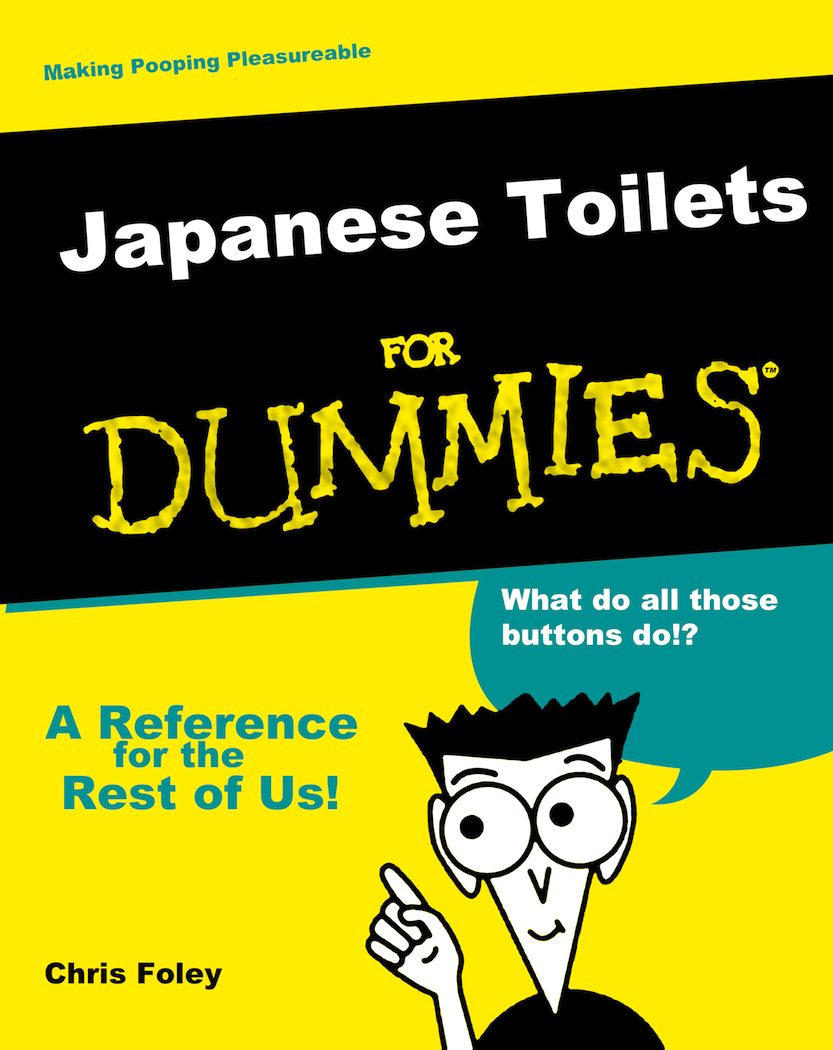Japanese Toilets For Dummies
Due to popular demand, a full guide to our toilets is located below. Please let me know if there are any questions left unanswered. Thank you.
Surviving Your First Encounter
Look, maybe you don't care what all the buttons do. Maybe you're reading this on your phone from the stall in the middle-of-nowhere Japan and that Chicken Teriyaki you ordered from the side of the road isn't sitting well with you. That's fine, I won't judge you. You can save the classy bidet nonsense for later. The most important thing is knowing how to flush, so let's get to it.
The two buttons you need are on the very top, labeled 流す (nagasu). These are the flush buttons. Since they are so important it may be worth your time to actually learn this Japanese and commit it to memory. To do so, here is a mnemonic to help you: 流す means flush.
On the left is the Kanji for big (大) and on the right is the Kanji for small (小). If you need to remove what remains of the teriyaki, use the big button. Otherwise, the small button will suffice.
Starting to Experiment
Ok, you've got flushing down. Now you are want to know more about this bidet you keep hearing about from the French couple down the street.
For now, ignore the orange button on the left. We will revisit that in a minute. The first button to look at is the one labeled おしり (oshiri). This button is the standard wash for your bottom. If you are completely new to the world of bidets and have no idea what this means: Water is going to be sprayed on your bum. Get ready.
The next button, labeled やわらか (yawaraka), is the gentler version of the previous button. If you found that pressure too high, use this wash mode instead. Or, maybe man up and use the first one...you baby.
Lastly, we have the classic bidet, labeled ビデ (bide). This does the same basic thing as the first two but sprays a slightly different location. Though it's labeled as a woman, I find this button is the best position for me as a man. As far as I know, there is no law preventing me from using this mode, so I will continue to do so. Just experiment with which of three works best for you and use that.
Lastly, back to the first button; the orange one. This button is labeled with the Kanji for stop (止). Quite simply; when you feel like you have had enough water splashed on your bottom, you push the orange button. Easy peasy, bottom cleany.
Advanced Toilet Usage
You're the kind of person that does their research first. You want to know what every single button does and how to get the most out of your toilet experience. I like you.
There are more controls that give you finer control over what each spray does. To start with, let's take a look at the pressure and directional controls.
Here we have the water pressure controls, labeled 水勢 (suisei). On the left is the Kanji for weak (弱) and on the right is the Kanji for strong (強). A green light will blink in those five circles to indicate where on the pressure scale you currently are. Personally, I like my pressure like I like my coffee: 強.
Next to the pressure buttons, you will find the 洗浄位置 (senjoichi) controls. This moves the water nozzle forward (前) and back (後) so that you can have the water hit just the right spot for your cleaning needs.
Finishing out that row of buttons is the パワー脱臭 (pawa-dashyu) button. This is the power deodorizer feature. Using some sort of black magic, it eliminates odors. I'm not entirely sure I know how well this works. It seems like its challenging me to out-odor the deodorizer. Unfortunately, I've never been further from a Taco Bell so it may be difficult to do so.
Feeling Fancy
The final row of buttons is reserved for power users and toilet connoisseurs, more commonly referred to as "my people."
Here we have my favorite feature of our Japanese toilets; temperature control (温度設定 - ondo settei) Do you remember how life-changing it was the first time you bought a car with heated seats? Well, this is that, but for toilets! Never again will your tongue get stuck to a frozen toilet seat!
You've probably noticed there are two buttons here. The left button, 便座 (benza), is for the heated seat. Pushing it controls the level of heat indicated by the three lights above. The left Kanji, 低 (hiku), indicates Low while the right Kanji, 高 (taka), indicates High.
The right button, 温水 (onsui), is for the temperature of the water used in the bidet functions described above. If you found the water a little too cold, you will want to push this button. It uses the same three lights and kanji to indicate where the temperature is on the heat scale. Again, left is low and right is high.
The remaining buttons are more administrative functions. Typically, my secretary handles these. The left-most is the ノズルそうじ(nozuru souji), which is nozzle clean. I'll leave this button to your imagination.
I believe the right three buttons are related but honestly I'm not entirely sure I know what they do. The button labeled おまかせ節電 (omakase setsuden) means power saving automatic schedule. Then the lights labeled 3-6-9 have the word タイマー (taima), which is timer. The final button is labeled with 確認 (kakunin), which means confirm. I assume the 3, 6, 9 refer to minutes or hours or months or years. There's really no way to know. Just leave these alone.
And that's it! Now you too can be an expert on Japanese pooping.

